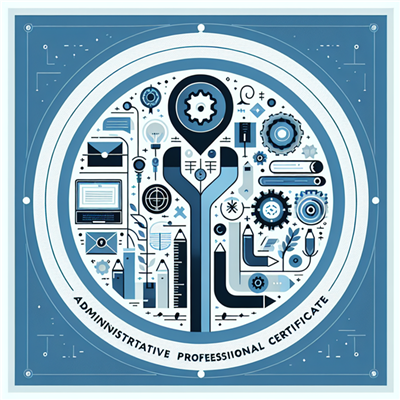
In the ever-evolving field of computer science, mastering data structures is a crucial step for aspiring developers, software engineers, and computer scientists. Data structures are the backbone of efficient algorithms and play a vital role in organizing, storing, and manipulating data in programming. A comprehensive data structure course can equip you with the foundational knowledge and practical skills needed to excel in programming and software development. This blog will provide a detailed breakdown of the key topics and skills typically covered in data structure training programs.
1. Introduction to Data Structures
Understanding Data Structures
A data structure is a specialized format for organizing, processing, and storing data. The primary goal of data structures is to enable efficient data access and modification. In the initial stages of a data structure course, you’ll learn the basic definitions and classifications of data structures, which can be broadly categorized into two types:
- Primitive Data Structures: These include basic types like integers, floats, characters, and booleans. They serve as the building blocks for more complex structures.
- Non-Primitive Data Structures: These include arrays, linked lists, stacks, queues, trees, and graphs, which are designed to store collections of data.
Why Data Structures Matter
Understanding the purpose and importance of data structures is crucial for any programmer. Efficient data structures can significantly improve the performance of applications and algorithms, making it essential to choose the right data structure for the task at hand.
2. Arrays and Strings
Introduction to Arrays
Arrays are one of the simplest and most widely used data structures. In this section of the course, you will learn about:
- Definition and Characteristics: Understand what arrays are, their fixed size, and how they store elements in contiguous memory locations.
- Types of Arrays: Explore different types of arrays, including single-dimensional, multi-dimensional, and dynamic arrays.
Working with Strings
Strings, often treated as a specialized array of characters, are fundamental in programming. Key concepts you will learn include:
- String Manipulation: How to create, modify, and manipulate strings, including common operations like concatenation, substring extraction, and character searching.
- Character Encoding: Understanding different encoding systems like ASCII and UTF-8, which are essential for text processing.
3. Linked Lists
Introduction to Linked Lists
A linked list is a more flexible alternative to arrays, allowing for dynamic memory allocation. In this section, you will learn about:
- Structure of Linked Lists: Understand the components of a linked list, including nodes and pointers.
- Types of Linked Lists: Explore various types of linked lists, such as singly linked lists, doubly linked lists, and circular linked lists.
Operations on Linked Lists
Key operations associated with linked lists include:
- Insertion and Deletion: Learn how to insert and delete nodes from different positions in a linked list.
- Traversal Techniques: Understand how to traverse a linked list and access its elements.
4. Stacks and Queues
Stacks
Stacks are a Last-In-First-Out (LIFO) data structure. You will cover:
- Definition and Implementation: Understand how stacks work and learn about their implementation using arrays and linked lists.
- Common Operations: Learn the core operations of stacks, including push, pop, and peek, and their applications in function calls and expression evaluation.
Queues
Queues are a First-In-First-Out (FIFO) data structure. Topics will include:
- Queue Implementation: Learn how to implement queues using arrays and linked lists.
- Types of Queues: Explore variations such as circular queues, priority queues, and double-ended queues (deques).
5. Trees
Introduction to Trees
Trees are hierarchical data structures that are essential for various applications. In this part of the course, you will learn about:
- Tree Terminology: Understand the basic terminology, including nodes, edges, root, leaf, and height.
- Binary Trees: Explore the structure of binary trees and their properties.
Advanced Tree Structures
You will also cover more advanced tree structures, such as:
- Binary Search Trees (BST): Learn how BSTs organize data for efficient searching, insertion, and deletion.
- Balanced Trees: Understand the importance of balanced trees, including AVL trees and Red-Black trees, which maintain efficient performance.
- Heaps: Learn about binary heaps, a specialized tree-based data structure that satisfies the heap property, often used in priority queues.
6. Graphs
Introduction to Graphs
Graphs are versatile data structures used to model relationships between entities. Key topics include:
- Graph Terminology: Understand vertices, edges, directed and undirected graphs, and weighted vs. unweighted graphs.
- Graph Representations: Learn about different ways to represent graphs, including adjacency matrices and adjacency lists.
Graph Traversal Algorithms
You will study essential algorithms for traversing graphs, including:
- Depth-First Search (DFS): Understand the DFS algorithm and its applications in searching and pathfinding.
- Breadth-First Search (BFS): Explore the BFS algorithm, its implementation, and use cases in shortest path problems.
7. Searching and Sorting Algorithms
Searching Algorithms
Searching algorithms are crucial for finding elements in data structures. You will learn:
- Linear Search: Understand the basics of linear search and its time complexity.
- Binary Search: Explore the more efficient binary search algorithm and its requirements for sorted data.
Sorting Algorithms
Sorting is a common operation in programming. Key sorting algorithms covered will include:
- Bubble Sort and Selection Sort: Basic sorting algorithms with simple implementations.
- Merge Sort and Quick Sort: More advanced sorting algorithms that improve efficiency and are widely used in practice.
- Time and Space Complexity: Gain an understanding of algorithm efficiency through big O notation.
8. Complexity Analysis
Understanding Time and Space Complexity
A significant component of any data structure course is learning how to analyze the efficiency of algorithms and data structures. You will learn about:
- Big O Notation: Understand how to use big O notation to express time and space complexity.
- Worst, Average, and Best Case Scenarios: Learn to evaluate algorithms based on different performance scenarios.
9. Practical Applications and Projects
Real-World Applications
Throughout the course, you will explore the real-world applications of data structures in various domains, such as:
- Database Management: Understand how data structures support database indexing and querying.
- Web Development: Explore how data structures are used in web applications, including session management and routing.
Hands-On Projects
Most data structure courses will include hands-on projects where you can apply what you've learned. These projects may involve:
- Building a Custom Data Structure: Create your own data structure from scratch and implement core operations.
- Algorithm Implementations: Solve problems using the algorithms studied, reinforcing your understanding through practical application.
Conclusion
A data structure course provides a comprehensive foundation in one of the most critical areas of computer science. By mastering the key topics and skills covered in such a course, you will be well-equipped to tackle complex programming challenges and develop efficient algorithms. Whether you’re a beginner looking to start your programming journey or an experienced developer aiming to deepen your knowledge, understanding data structures is essential for success in the tech industry. With the skills acquired from a data structure course, you’ll be ready to enhance your coding abilities and contribute effectively to software development projects.
When selecting a data structure training program, it's essential to consider the course content, the expertise of the instructors, and the flexibility of the program. Koenig Solutions, a leading IT training Company, offers a comprehensive data structure course designed to equip you with the skills needed to excel in the technology industry.
By leveraging Koenig's data structure training, you can open up a world of opportunities in the tech industry. So, why wait? Unleash your potential today with Koenig Solutions.







COMMENT